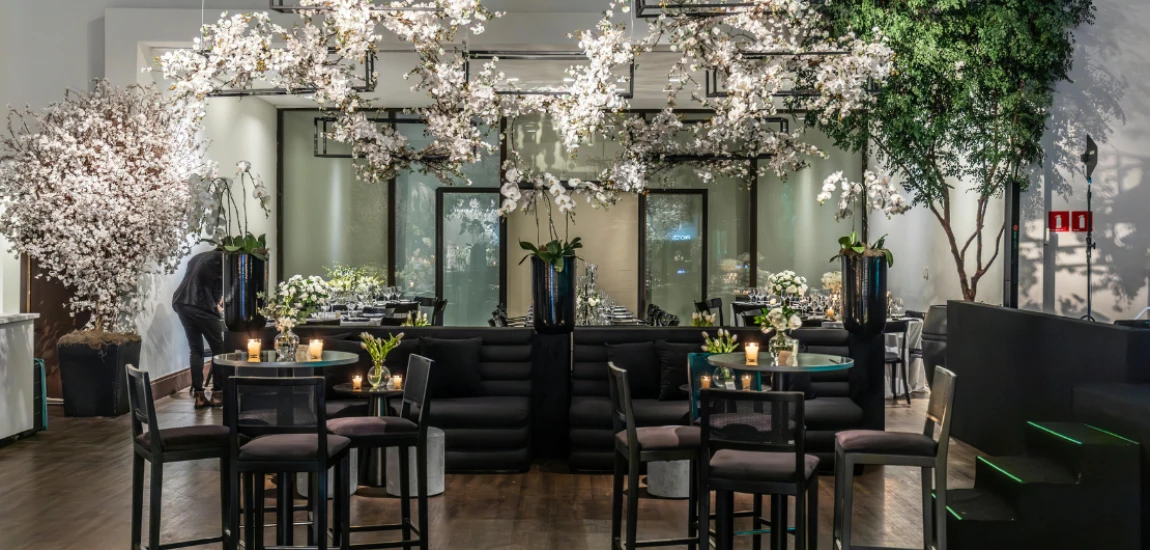The Rise of Intimate Venues: Why Smaller Shows Hit Harder

For decades, when people imagined a concert, the image that came to mind was a massive stadium filled with flashing lights, booming speakers, and tens of thousands of fans waving glow sticks in unison. While those shows can be exhilarating, there’s a growing movement in live music that suggests bigger isn’t always better. The rise of intimate venues is proving that small-scale concerts often deliver experiences that stadium shows simply cannot replicate.
The appeal lies in connection, authenticity, and atmosphere. Instead of watching from the nosebleeds or following the action on giant LED screens, fans in intimate venues get to see every expression, hear every note without distortion, and even interact with artists on a personal level. These shows strip away some of the spectacle in favor of raw emotion and closeness, reminding us of why we fell in love with live music in the first place.
In this blog, we’ll explore why smaller shows hit harder—emotionally, sonically, and culturally—and why both fans and artists are increasingly drawn to these venues. From the artist-fan bond to the superior sound quality, from the sense of community to the shifting future of live performances, intimate venues may very well define the next era of concerts.
A Stronger Artist-Fan Connection
One of the most compelling reasons people are gravitating toward smaller venues is the undeniable connection they foster between artists and fans. At a stadium show, you’re often one of tens of thousands, your voice lost in the roar of the crowd. The artist might not even see you, much less acknowledge you individually. But at an intimate show—say, in a 300-person club or a cozy 800-seat theater—the dynamic changes completely.
Fans are close enough to make eye contact, to catch a smile, to hear a performer speak directly to them without relying on microphones or jumbo screens. This creates a sense of belonging that feels deeply personal. Audience members don’t just feel like spectators; they feel like participants in the performance. For many, that sense of intimacy becomes the most treasured part of the experience.
Artists themselves often describe small shows as some of their favorites. When the crowd is close, performers can feed off that energy directly. They can experiment with banter, share personal stories, or improvise without worrying about whether tens of thousands will notice if something doesn’t go perfectly. Many iconic artists—from Adele to Ed Sheeran—have spoken about how their earliest small-room gigs shaped their careers and still remain among their most cherished memories.
Smaller shows also blur the line between audience and performer. Fans might get the chance to speak to the artist afterward, request songs, or witness unplanned encores. These moments become lifelong memories, transforming a night of music into a personal story that can never be replicated in a massive stadium.

Better Sound, Better Experience
While the emotional connection is crucial, another major reason smaller venues stand out is sound quality. Anyone who’s been to a stadium show knows the common frustrations: echoing vocals, muffled lyrics, or overpowering bass that drowns out everything else. Large arenas simply weren’t designed for acoustics—they were designed for sports events and crowds. Sound engineers often struggle to balance the mix, and depending on where you’re seated, your experience can vary drastically.
In contrast, intimate venues are far more sonically rewarding. The smaller the space, the more control sound engineers have, ensuring that vocals are crisp and instruments are clear. Instead of being blasted by sheer volume, fans get to experience the textures of the music—every guitar strum, every piano chord, every vocal inflection. Genres like acoustic folk, indie rock, or jazz particularly shine in these settings because their subtleties would be lost in a cavernous arena.
The physical layout of intimate venues also contributes to a more immersive experience. Without massive screens or distant seating tiers, the focus stays on the stage itself. You’re close enough to notice the details—the artist’s body language, the drummer’s rhythm, even the way light falls across the instruments. This sense of presence transforms a performance from being just an auditory experience into a full-body memory.
Fans also enjoy the practical perks: shorter lines, easier access to restrooms and concessions, and far less time spent navigating crowds. Many leave smaller shows feeling like they got more than just a concert—they got comfort, clarity, and authenticity all rolled into one. For many, that combination makes intimate venues far more rewarding than stadium spectacles.

The Return of Community in Live Music
Another reason behind the rise of intimate venues is the sense of community they nurture. At a large arena concert, it’s easy to feel anonymous. You’re surrounded by thousands of strangers, most of whom you’ll never interact with. But smaller shows encourage a different vibe. The person standing or sitting next to you might strike up a conversation. You might see familiar faces from previous shows in your city. By the end of the night, you feel part of a tribe united by a shared love of the music.
Intimate venues often have deep ties to their local communities. Independent clubs, historic theaters, or even repurposed spaces like old warehouses frequently serve as cultural hubs where local fans gather regularly. Attending a show in these spaces isn’t just about the headliner—it’s about supporting the local scene, discovering new acts, and keeping these community spaces alive.
This sense of belonging extends to the performers as well. Emerging artists rely heavily on intimate venues to build their fanbase. For them, these small shows are testing grounds—places where they can interact with listeners, refine their craft, and grow organically. Fans who attend often get the thrill of saying, “I saw them before they blew up.” That sense of insider pride makes community even more powerful.
Moreover, smaller venues often feel less transactional than massive stadiums. Instead of being another stop on a giant global tour, these shows feel handcrafted, curated, and personal. They remind fans of music’s roots: gatherings in small rooms where connection mattered more than spectacle. In a digital age dominated by streaming and algorithms, the human community of intimate shows offers something truly refreshing.

Why Artists Are Choosing Smaller Venues
It’s not only fans who see the appeal—artists themselves are increasingly choosing smaller venues, sometimes even when they could easily sell out arenas. On the surface, this might seem counterintuitive. Big shows bring big money. But money isn’t the only motivation. Many artists crave the authenticity and creative freedom that small shows allow.
For one, smaller venues come with less pressure. Without the need for extravagant staging, pyrotechnics, or elaborate choreography, artists can focus purely on the music. This often leads to stripped-down, raw performances that feel honest and heartfelt. Artists can try out new material, improvise, or even change setlists mid-show based on crowd energy. That flexibility is nearly impossible in a stadium, where everything is tightly choreographed and synchronized.
There’s also the exclusivity factor. A superstar performing in a 200-capacity venue creates buzz that stadium shows simply can’t. Fans who manage to attend know they’ve experienced something rare, almost secret. These shows often become legendary precisely because they’re so hard to replicate.
Smaller shows also help artists reconnect with their roots. For those who started out in pubs, open mics, or basements, returning to intimate venues can feel grounding and nostalgic. It reminds them of why they started making music in the first place. And in today’s digital era, where many fans first discover artists online, these small gigs serve as opportunities to turn digital followers into lifelong fans.

The Future of Live Music: Will Smaller Shows Dominate?
The question remains: will intimate venues overtake stadium concerts as the dominant form of live music? The answer likely lies somewhere in the middle. Stadium shows aren’t going anywhere—after all, they allow artists to reach massive audiences and generate huge revenues. But the rise of intimate venues suggests that fans and performers alike want a balance between spectacle and authenticity.
We may see more hybrid touring models in the future, where artists book both massive arenas and smaller clubs during the same tour. This approach lets them cater to different fan experiences—grand spectacle for those who want it, and raw intimacy for those craving closeness. In fact, many artists are already experimenting with this. Taylor Swift, for example, has paired stadium tours with surprise acoustic pop-up shows, while indie artists often schedule smaller “after-shows” following big festival appearances.
Streaming has also played a role. With music so readily available online, fans don’t just want to hear their favorite songs live; they want to feel them in real, tangible ways. Intimate venues satisfy this craving by offering a one-of-a-kind experience that no algorithm or livestream can replicate.
Looking ahead, the future of live music might not be dominated by one format over the other but by choice and diversity. Fans will continue flocking to stadiums for spectacle while increasingly seeking out intimate venues for authenticity. Together, they create a richer, more dynamic concert landscape that benefits both fans and artists.




